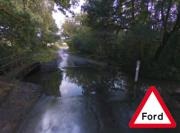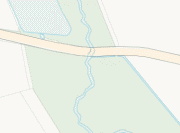There is an e-petition doing the rounds at the moment (I was notified via the newsfeeds). Here’s the exact petition wording:
Regulate/stop parent/relatives/friends supervising learner drivers.
Responsible department: Department for Transport
We now have two instances whereby learner drivers have caused deaths while being supervised by unqualified persons. Mr Penning wants to stop unqualified instructors (PDIs) giving driving tuition, this should include parents/spouses/relatives/friends. The Government should either make it illegal for non qualified persons to give any driving instruction whatsoever to learner drivers, or force them to attend a training course before supervising learner drivers. If Mr Penning wants professional instructors to do motorway training, then ADIs should do all the training.
I am a fully qualified ADI. I never went down the trainee licence (pinkie) route. My current check test grade means I am considered pretty good, and I like to think my pass rate reflects that.
And I actively encourage my pupils to do quality private practice with mum or dad (or whoever) whenever possible.
If I get even a whiff of the possibility of them getting insured on mum or dad’s car, I push the subject hard. I often take mum or dad (or spouse/partner) out with us on a lesson to show them what to look for.
Young people have accidents for two main reasons:
These two things are finely interwoven. However, the overriding complicating factor is that not all young people have a bad attitude, and not all of them are inexperienced to the point that it is a major issue. In other words, since the degree of interweaving can vary between none at all to almost total, and no one can actually say at what point it becomes a danger because no one can quantify it. Quite simply, not all young drivers have accidents, nor are they all likely to!
A driving instructor’s job is to turn someone who cannot drive into someone who can by dealing with the “inexperience” aspect. That’s all.
You see, the typical young learner spends maybe 1 or 2 hours with their instructor each week. They have another 150 or more to spend on doing stuff that has bugger all to do with the instructor – and they’ve also had at least 17 years in which to develop any attitude they might have. They can easily conceal (on purpose or otherwise) such attitudes during driving lessons. I mean, you’re not going to get many pupils admitting to being drug dealers, or to being on the run from doing a bank job on their driving lessons, anymore than you’ll get them boasting how they’re going to drive like complete prats when they pass.
Only a very mixed up person (and unfortunately, there are a fair few – in government AND on the Register) would ever believe that an ADI’s primary function is to change attitudes. “Lifestyle Coach and Driving Instructor” is the new advertising strapline for many.
By having mum and dad take them out, they can gain valuable road experience that, for financial reasons, they will quite possibly not get through their paid-for driving lessons. As I often say to my own pupils, you can learn all there is to know about driving in an hour or two, but being able to put it all safely into practice requires practice, which leads to experience, and that takes time.
Experience is one thing that cannot be hurried – but if the idea of having to pay for every second of it hurts, then the responsible learner will make sure they get it somewhere else. And that’s what I try to make mine do, knowing that they want to keep their spending on driving lessons to a minimum.
The e-petition is somewhat confusing. To begin with, it is clearly based on the two recent cases where a learner accidentally killed her mother, and where another learner accidentally killed a child.
At this stage, I would point out two other stories which I reported on the blog, where learners out with qualified instructors flipped the car and ruptured a gas pipe. And these are not isolated cases – I didn’t bother commenting on this one from a couple of days ago ( another learner flipping a car), and you only have to read the comments from instructors on web forums to know that accidents are not uncommon. Any of these could, under other circumstances, have resulted in deaths. Any significant accident could. An ADI sitting in the passenger seat is not a Cloak of Invincibility.
The saying “there but for the grace of God, go I” springs to mind, although I suspect the meaning will be far too subtle for many to understand.
The e-petition implies that these unfortunate deaths were a direct result of the supervising driver being unqualified. Even the second one, where the supervising driver appeared to be less capable than would be expected, could still happen even if an ADI were present. It may be less likely, but if we could foresee all possible circumstances then we’d all be gods instead of men.
The e-petition appears to confuse a number of issues. It somehow links the impending change to motorway rules to all other driving, and while I agree that this would be “neat and tidy”, there is a lot more that would have to be considered. After all, learners have never been allowed on motorways, nor is it going to be mandatory that they receive lessons on them, so there is no real issue to address with respect to mum and dad other than to warn them to keep off. On the other hand, tens of thousands of mums and dads are currently supervising their kids, and stopping this would have all sorts of social and financial implications.
The e-petition talks of supervising drivers taking “training courses”. This part makes some sense – but not when taken with all the other things the text mentions.
Overall, the e-petition is confused and doesn’t present anything like a workable solution. But more than that, it is trying to provide a solution to a problem which doesn’t really exist.
I’m sure most ADIs would welcome a system where only they were allowed to teach learners, or where any supervisor had to be trained by them. But that isn’t a basis for making it happen!
The e-petition needs 100,000 signatures before it will be considered for discussion in Parliament. It has less than 200 as I write this, and although I am sure quite a few more will sign it, 100,000 is a very large target. Once the usual agitators have had their fill, and signed just for the sake of it, the underlying questions over motive and clarity still remain.
Private practice – with mum and dad – is a vital part of the learning experience.
If anything should change, my view would be that learners should be required to take a minimum number of lessons with a qualified instructor before they go to test (along the lines of what Ireland has recently introduced), possibly with approval to put in for the test lying with the instructor (though I can see the likely opposition to that).
 confused
confused To any PDIs out there, adiNEWS Magazine is offering a free 6 month subscription.
To any PDIs out there, adiNEWS Magazine is offering a free 6 month subscription. service drivers possessing all the relevant anorak certificates are capable of judgement errors in the heat of the moment.
service drivers possessing all the relevant anorak certificates are capable of judgement errors in the heat of the moment. clearly. I take my pupils there sometimes… but not when it’s been raining, because then it COULD be as big as a lake (and often is)!
clearly. I take my pupils there sometimes… but not when it’s been raining, because then it COULD be as big as a lake (and often is)! ven get close to being able to identify features like this from the style of print.
ven get close to being able to identify features like this from the style of print.
 expiry date on it. Apparently, 1.6 million have already missed their deadline, and another 2.9 million look likely to.
expiry date on it. Apparently, 1.6 million have already missed their deadline, and another 2.9 million look likely to.